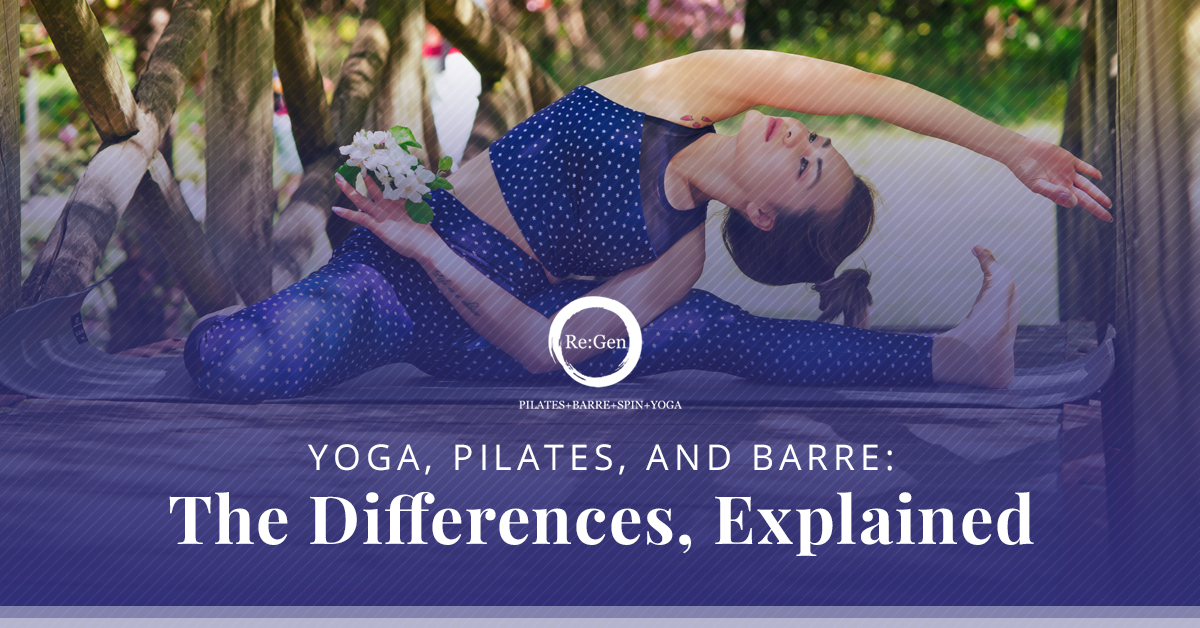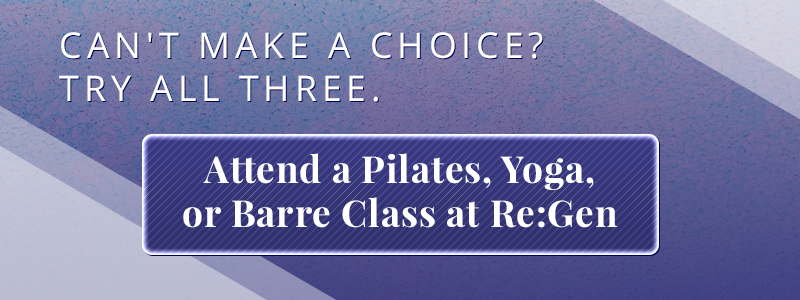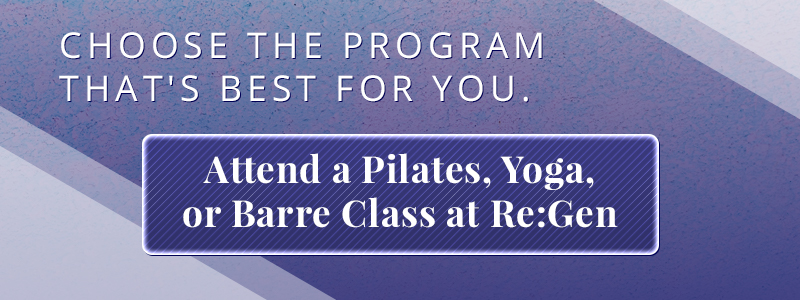If there’s one constant we can always rely on, it’s that the realm of personal fitness will always be evolving, changing, and innovating. Over the years, an endless number of various workout philosophies have emerged. Some take the world by storm and permanently change our paradigm about personal exercise, while others die quietly, leaving room for new innovators to take their place.
Of the countless exercises that have emerged over the centuries, three of them have a particularly strong impression on us at our fitness studio in Prosper, TX: Pilates, Barre, and Yoga. At least two of these are well-known to the American populace — pilates has been a popular workout for the last fifty years, and yoga has absolutely exploded in popularity in the west for the last decade or so. Barre, however, is slightly less well-known, being a relatively newer form of workout.
The thing is, pilates, yoga, and barre are all very quite similar while being fundamentally different at the same time. For the uninitiated, it can be hard understanding the differences and knowing which one is right for you. In this blog post, we’ll break down the differences between these three workouts.
The Basics
Pilates
Pilates, invented in 1920 by Joseph Pilates as a means of physical rehabilitation for former soldiers, is meant to improve your flexibility, body awareness, and strength. Similar to yoga, Pilates involves a series of special positions and body movements that you hold, which are meant to test your body and improve your concentration. You can do most pilates exercises on a mat, and sometimes special equipment is used such as straps and balls.
Pilates, unlike yoga and barre, puts particularly strong emphasis on core strength. Pilates is made up of a “from the inside out” mentality that puts your core muscles to work in every workout. The idea is that core strength is foundational to your body’s strength as a whole, and by working that area, you’ll be better equipped to become stronger everywhere else.
Pilates is ideal for people who are specifically seeking to improve their physical condition, especially if they’ve been putting up with weak muscles in their back, neck, or core. It’s also an effective tool for building strength without adding bulk, unlike weight exercises where visible muscle toning is often one of the main goals.
Yoga
At first glance, yoga has many similarities to pilates. You’re holding various positions for extended periods of time with the intent of improving flexibility and muscle strength. However, one of the biggest differences between yoga and pilates is the intent of the exercise. Yoga, at its core, is generally viewed as a therapeutic exercise that’s meant to promote the health of body, mind, and soul.
A yoga routine is beneficial to the body because it achieves many of the effects that pilates does — you’re building muscle control, improving flexibility, and stretching your muscles adequately and effectively. Meanwhile, it’s beneficial to your mind and morale because it’s a form of exercise that’s designed with the express intent of de-stressing. A typical yoga session involves meditation, stretching, and breathing, and the physical components are meant to bring your mind to a happier and healthier mental state.
While yoga is physically demanding and can even be quite intense, the end goal is always relaxation and healthy de-stressing. If you end up working yourself hard, it was probably by design, and when combined with the other elements of yoga, you’ll probably feel all the better for it.
The biggest differentiator between yoga and other exercises is that the primary intent of yoga is to improve your mental state and overall quality of life. The exercise component is just one of its aspects. Yoga is somewhat of a slow-burn exercise that will undoubtedly make you more physically fit, but it’s something that naturally happens over time, rather than being the main intent of the program. Think of it as a bonus, rather than the main feature. Indeed, most people who do yoga do it for the full experience; if raw physical improvement is the only thing you’re looking for, it’s often more effective to do a program that’s more honed and focused to that specific purpose.
Barre
By far the most recent of these three programs, barre is an innovative approach to tackling many of the goals that pilates and yoga are designed for — focusing specific muscle groups through unique body movements that ultimately improve your flexibility, posture, and muscle awareness.
While the goals are the same, the execution is quite different. Of the three methods, barre takes the most unique approach by far — barre takes heavy inspiration from ballet to incorporate dance-like movements and positions into the workout.
The dancing element of barre fitness owes its origins to its creator, a German dancer named Lotte Berk who invented the method as a means to maintain her health and strength during an injury.
In modern times, barre combines elements of Pilates, yoga, and ballet to create a unique workout that’s not only physically demanding and mentally rewarding, but also fun! Working out can be a drag and the kinetic nature of the barre method helps to make the process feel more like a fun activity rather than an obligation.
The other big difference that separates the barre method from pilates and yoga is its cardiovascular nature. Make no mistake — in a barre workout, you’ll be moving and working the majority of the time. This is distinct from the other two workouts; pilates and yoga are both more stationary in nature, and focus more on working your body slowly through intense prolonged positions. It’s intense, but not in the same way that a high-energy, cardiovascular workout is.
Finally, one very important aspect of the barre method: in terms of noticeable improvements to your body, barre delivers the fastest. Due to the nature of the workout, you’ll be able to tone your muscles (without adding bulk) and you can start seeing results within weeks.
Which Workout is Best For You?
Now that the differences have been made clear, the question still remains — which one is best for you?
You Should Do Pilates If:
- Your main goal is to improve muscle definition and strength while reducing bulk
- You enjoy yoga but you’re looking for a more focused workout
- You’re pregnant or recovering from an injury
- You want to strengthen your core muscles or improve your posture
You Should Do Yoga If:
- Your need for measurable physical improvement isn’t immediate or urgent
- You look at fitness as a way to de-stress
- You want to improve flexibility and muscle awareness
- Therapeutic benefits are equally or more important to you than physical improvements
You Should Do Barre If:
- You want the benefits of yoga and pilates in one workout
- You prefer kinetic cardio workouts to stationary mat exercises
- You want quick results
- You enjoy the physical benefits of dancing but you don’t want to be a dancer
Quality Pilates, Yoga, and Barre Classes in the Prosper Area
If you’re in or around Prosper, TX, we have good news for you — you don’t have to wonder which one of these is best for you! At Re:Gen, we offer all three programs. Stop on by and try each one out if you’re unsure — we know that you’ll love at least one of them. Contact us today to schedule an appointment!



leave a comment